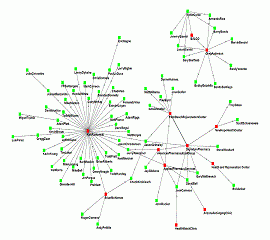I am fortunate to have so many friends and colleagues who work in end-user and solution provider companies and who are impacted by the issues I cover in my blog. After each post I often exchange emails and phone calls with some of them and we discuss/debate what I’ve written about. These are great conversations because they sometimes confirm my opinions and sometimes challenge them, but I almost always come away with a more refined understanding of the technology or regulation we discussed. That is, I learn something.
This is exactly what has been happening with my recent series on Supply Chain Master Data (SCMD). As I’ve defined it, SCMD is just like regular old Master Data (MD) except that the identifier and the full data set behind each instance of SCMD has a single owner, and all parties in the supply chain who may encounter the identifier must have a way of obtaining the full set of data from the owner so they know what the identifier means. But this assumes that only the identifier will be used in supply chain data communications in place of the full data set that the ID refers to.
GLN’s On Electronic Invoices
Let’s take GS1’s GLN (Global Location Number), for example. You can use GLN’s in two ways: as true SCMD, or in a non-SCMD way.
An example of using GLN’s as SCMD in an invoice application would result in an electronic invoice that did not have any explicit addresses in it–no customer billing address, no customer shipping address and no “remit payment to” address. Instead, it would simply include the customer’s billing GLN, the customer’s shipping GLN and the “remit payment to” GLN. Each party in this example would have already obtained the full addresses from their respective owners in some way, either through a registry (like GS1 U.S.’s GLN Registry for Healthcare), or directly from the owner, so there is no need to include that data on each invoice between these parties.
The non-SCMD use of GLN’s occurs when a company uses a GLN identifier as a way of obtaining their trading partner’s full address, and then they would put the full address on each of their invoices for that partner. This approach makes use of GLN’s to “synchronize” the address master data that each trading partner keeps locally. Continue reading Use of GLN and GTIN for Pedigree Regulatory Compliance →
 GS1 EPCglobal ratified and published the most recent version of the Tag Data Standard (TDS), 1.5. I have always been a fan of TDS, but earlier versions served as much to expose embarassing disconnects in GS1 standards as they did to explain how to apply GS1 identifiers in an Radio Frequency IDentification (RFID) context. Earlier versions of TDS tightly bound the concept of the Electronic Product Code (EPC) to RFID, and that’s just wrong. “EPC”, even as defined in those earlier versions of TDS, is a way of uniquely identifying objects on a global basis. It’s purely a globally unique identifier standard. That’s a hugely important and relatively new concept. RFID–a simple data carrier technology that’s been around for many years–is almost insignificant in comparison.
GS1 EPCglobal ratified and published the most recent version of the Tag Data Standard (TDS), 1.5. I have always been a fan of TDS, but earlier versions served as much to expose embarassing disconnects in GS1 standards as they did to explain how to apply GS1 identifiers in an Radio Frequency IDentification (RFID) context. Earlier versions of TDS tightly bound the concept of the Electronic Product Code (EPC) to RFID, and that’s just wrong. “EPC”, even as defined in those earlier versions of TDS, is a way of uniquely identifying objects on a global basis. It’s purely a globally unique identifier standard. That’s a hugely important and relatively new concept. RFID–a simple data carrier technology that’s been around for many years–is almost insignificant in comparison.

 “…[C]ommencing on July 1, 2016, a wholesaler or repackager may not sell, trade, or transfer a [prescription] drug at wholesale without providing a pedigree.
“…[C]ommencing on July 1, 2016, a wholesaler or repackager may not sell, trade, or transfer a [prescription] drug at wholesale without providing a pedigree.

